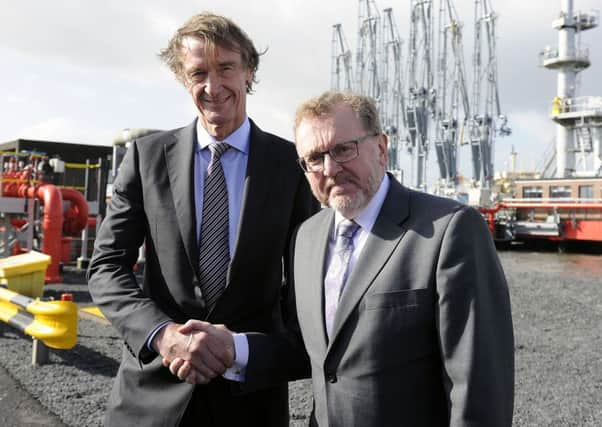Don't say UK Government isn't careful over fracking


On 6 October the UK Government granted planning permission for the onshore shale gas exploration company, Cuadrilla, to construct and drill up to four exploratory wells at its site at Preston New Road in Lancashire using the controversial recovery technique known as hydraulic fracturing or “fracking”.
For many objectors in Scotland this decision will be the latest example of what Fergus Ewing MSP described last year in a ministerial statement as Westminster’s “gung ho” approach to fracking. An examination of the Secretary of State for Communities and Local Government’s 567-page decision letter incorporating the detailed consideration of the evidence of the 19-day public inquiry into Cuadrilla’s proposals would suggest, however, that the UK Government’s approach to the decision-making process was every bit as “cautious and evidence-based” as that which the Scottish Government has stated it will apply to the issue when it finally comes to review its 2014 decision to impose a moratorium on all onshore unconventional gas exploration and production in Scotland.
Advertisement
Hide AdAdvertisement
Hide AdFor a start, it refused to grant planning permission for Cuadrilla’s sister exploration site at Roseacre Wood. Looking at the site specific evidence presented at the public inquiry, it agreed with the conclusion drawn by its planning inspector that “in the absence of satisfactory mitigation measures” the volume of HGV movements over the local road network in question would result in a “serious and very significant adverse impact” on the safety of road users.
While Cuadrilla have been given the opportunity to review their traffic management plan in the light of its identified shortcomings, the decision to reject the appeal pending receipt of improved mitigation proposals demonstrates the significant weight that the UK Government placed on the issue of public safety.
The impact on local amenity was also given significant weight in the decision-making process. Visual and noise impacts were scrutinised closely at both sites. Despite the operator pressing for a flexible approach to the issue of drilling rig height (anything up to 56 metres), Sajid Javid MP, the Secretary of State ruled that a condition restricting the height of the rig to 36 metres should be imposed.
Night-time noise limits, lower than those recommended by the World Health Organisation to avoid sleep disturbance, were also imposed on the operator. Meeting those limits will require additional mitigation measures, all of which will add to exploration costs. The Scottish Government will also be interested to understand how its UK counterpart dealt with the issues of public health and public concern given the weight which objectors in Scotland have attached to these matters in responses to the ongoing Scottish public consultation exercise. A cursory reading of these objections confirms the extent to which they are based on information which has been disseminated from internet reports, accurate or otherwise, of US experiences.
The UK Government concluded, given the number of “critical” differences between the two countries (such as the completely different” regulatory regimes and the fact that UK drinking water comes from surface sources, not ground water, and is subject to treatment and quality control) that there was “simply no basis to extrapolate from the US experience to the UK.”
The frequently raised concern of induced seismic event felt at surface level was also looked at closely. Following the “earthquake” attributed to the use of hydraulic fracturing at Cuadrilla’s Preece Hall site near Blackpool, the industry introduced several mitigation measures that are now embedded into the consenting process.
These include the real time monitoring of the extent of fracture growth using buried micro-seismic array and the implementation of a “traffic light system” whereby the fracturing process can be reduced or aborted altogether in the face of minor seismic activity. The Secretary of State accepted his inspector’s conclusion that taken together these measures would ensure that the risk of induced seismisity was “reduced to a minimum and an acceptable level.”
The Secretary of State noted too in his findings that Friends of the Earth had pressed for a planning condition which would require the local health authority ahead of drilling operations commencing to carry out a public health assessment. He concluded, however, that this would be an “ultimately pointless” exercise.
Advertisement
Hide AdAdvertisement
Hide AdIn drawing these concerns together the Secretary of State pointed out that “the unfortunate truth” of the matter is that nationally needed energy development, whether it be shale gas, nuclear, wind or solar, will always have some impact on an area. The crucial point, however, was to ensure that each of the impacts identified, whether from emissions, noise or traffic, was “closely controlled, limited and monitored”. Ultimately, however, for many objectors their concerns will not be assuaged unless and until they can see that hydraulic fracturing can be carried out in the UK without causing the problems which they have been led to believe are likely to occur.
The Cuadrilla decision now gives the industry the opportunity it needs to provide that demonstration.
Sandy Telfer, Partner DLA Piper Scotland LLP